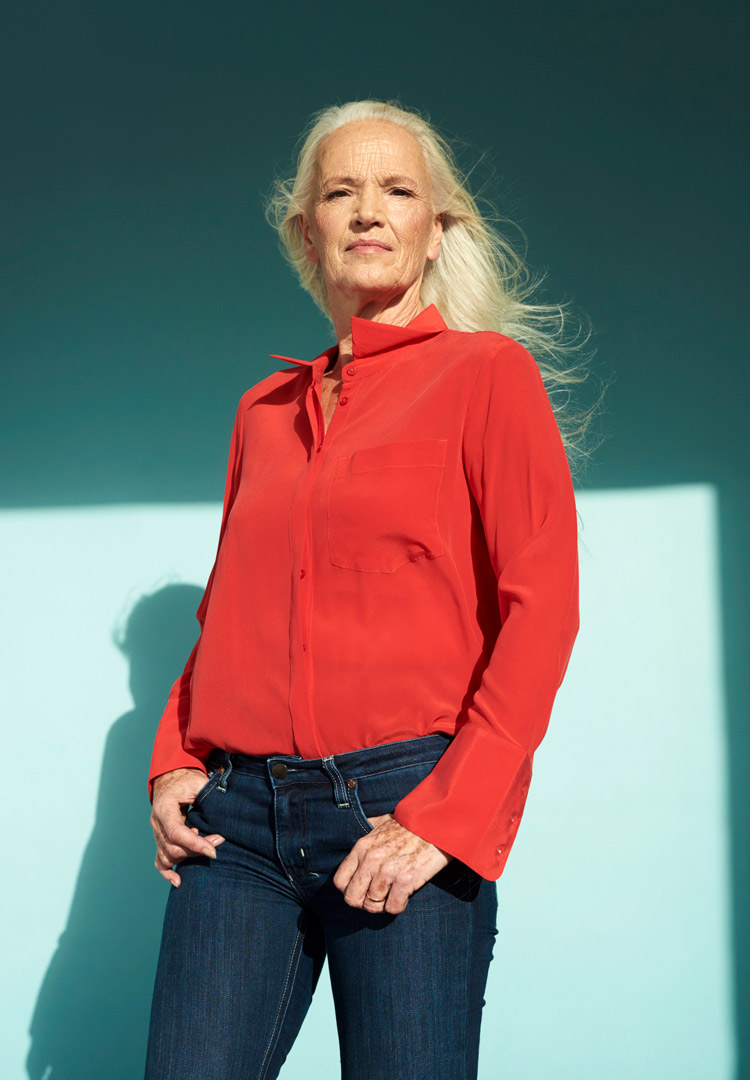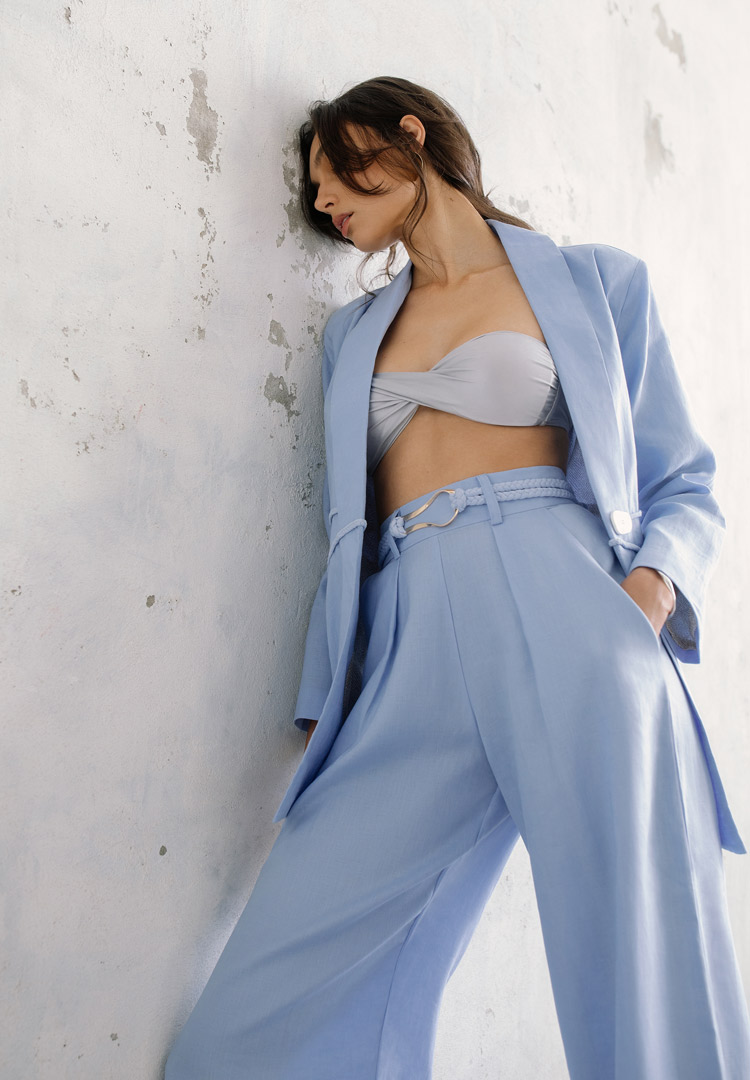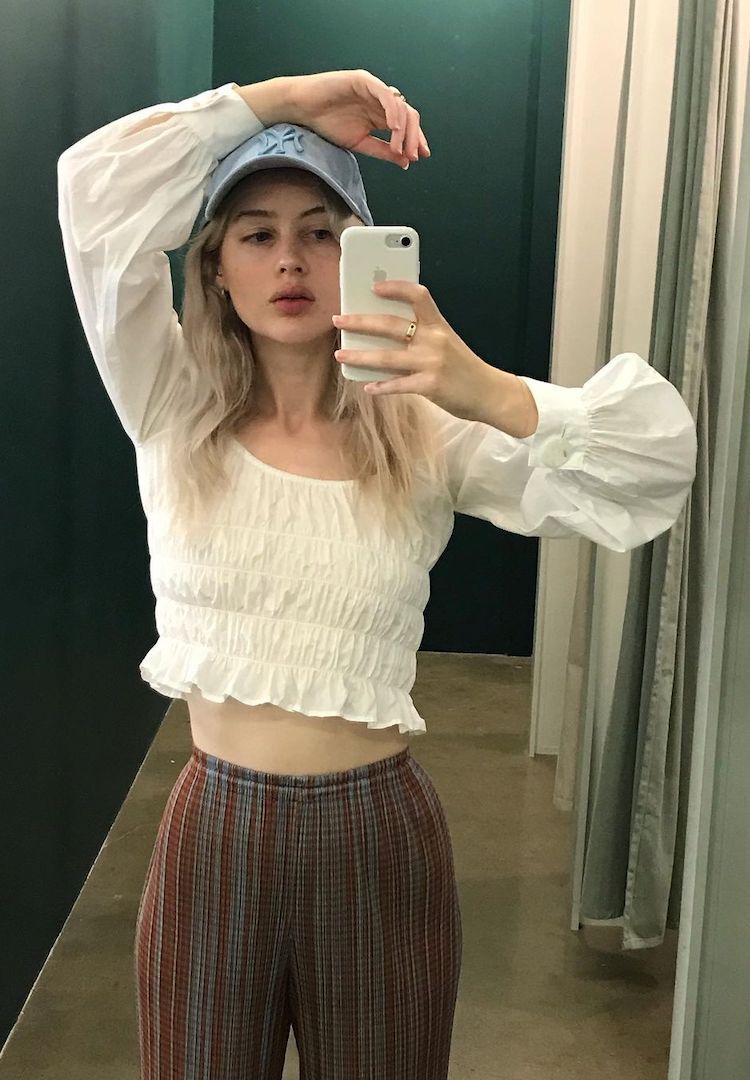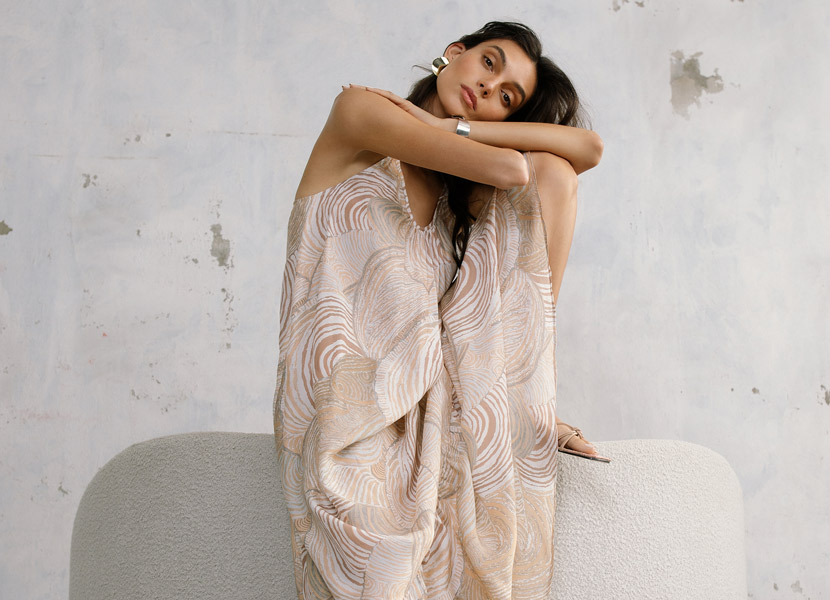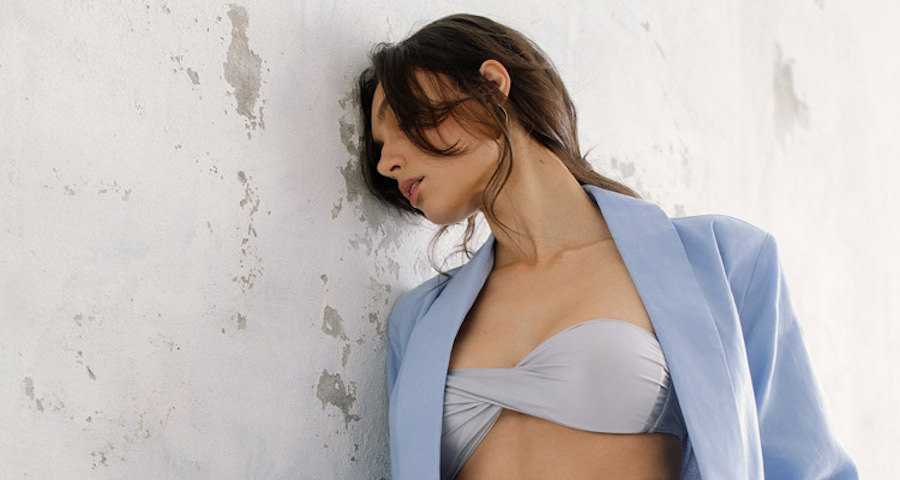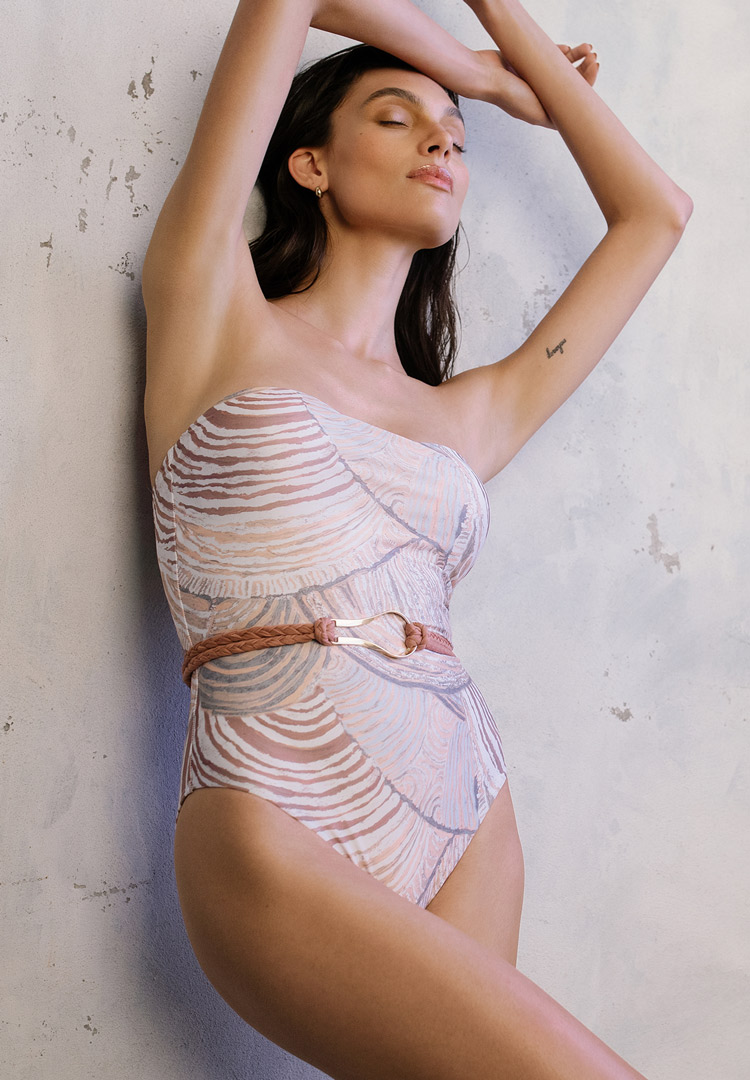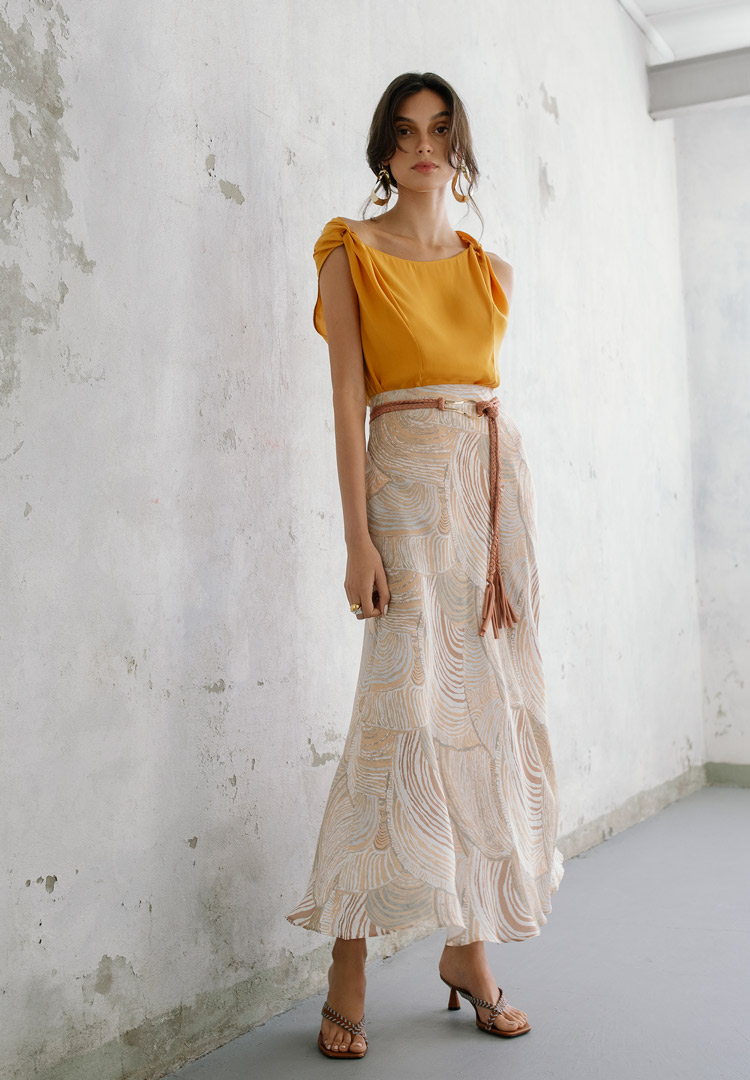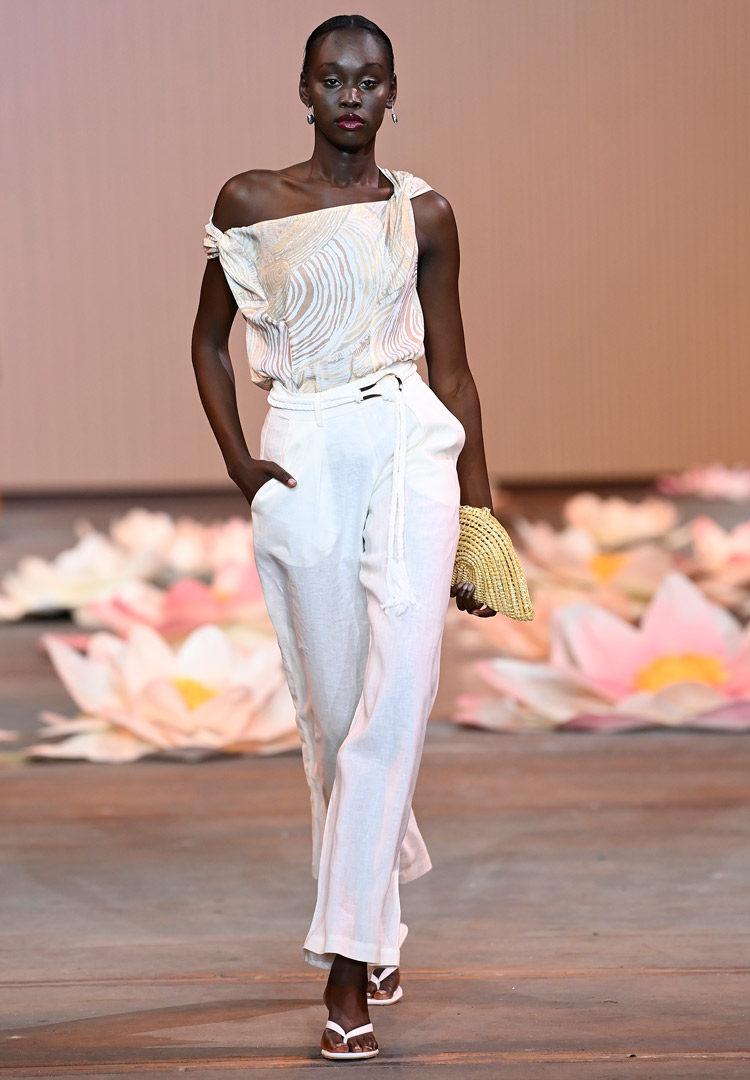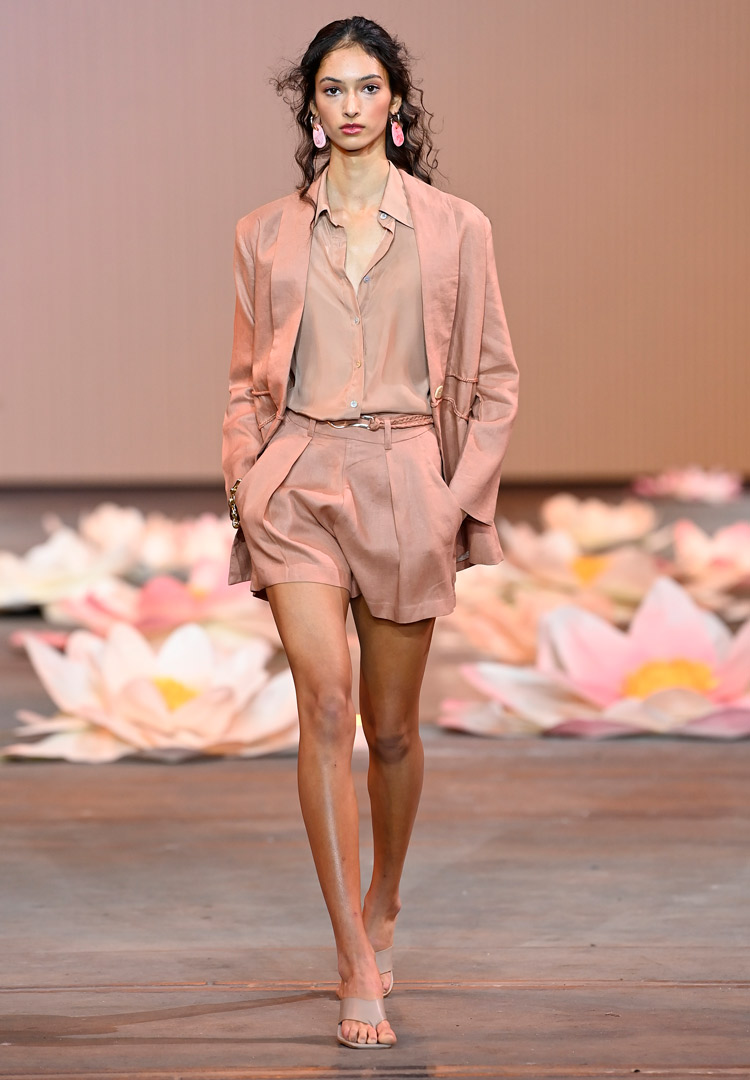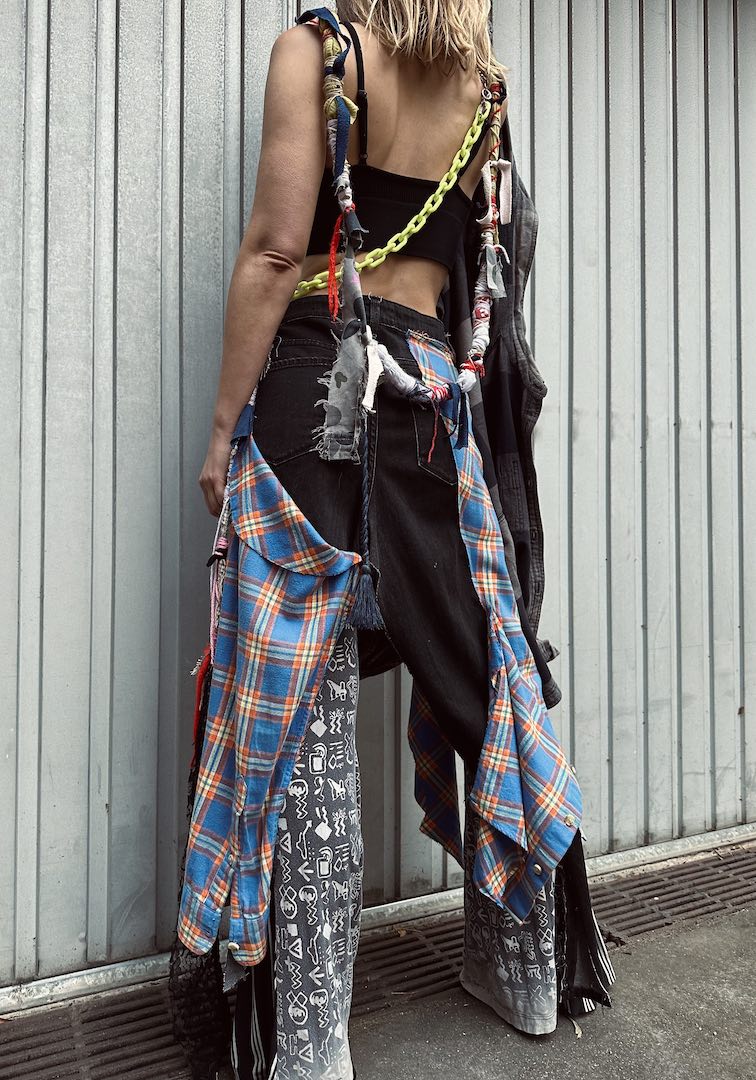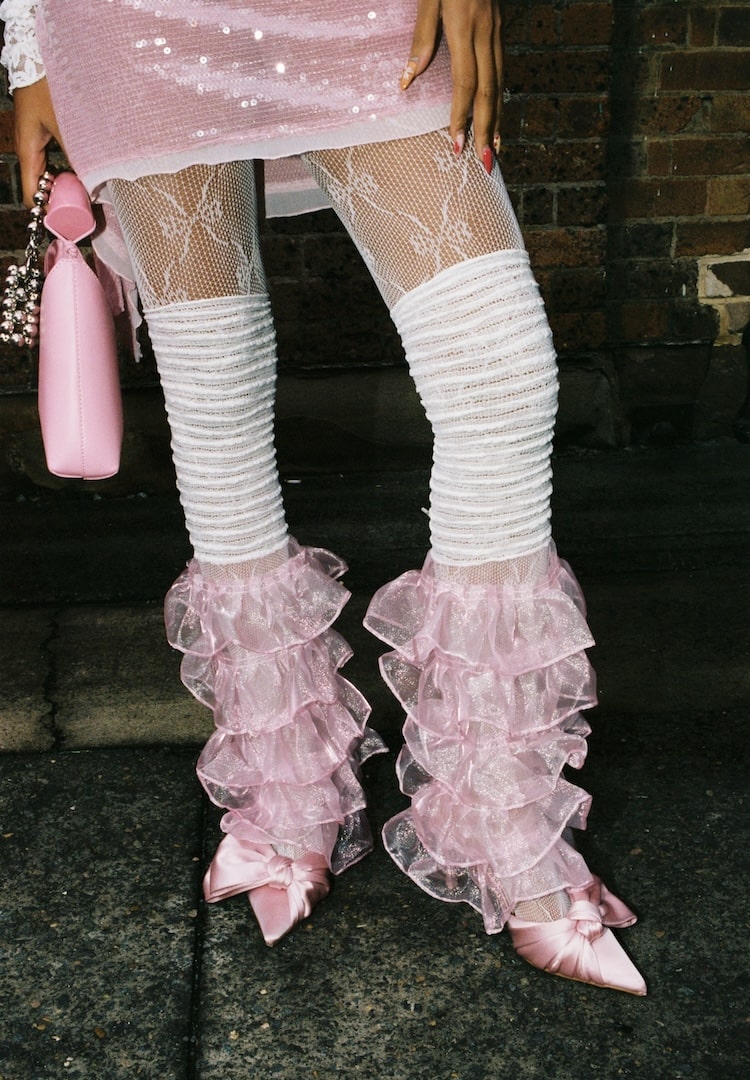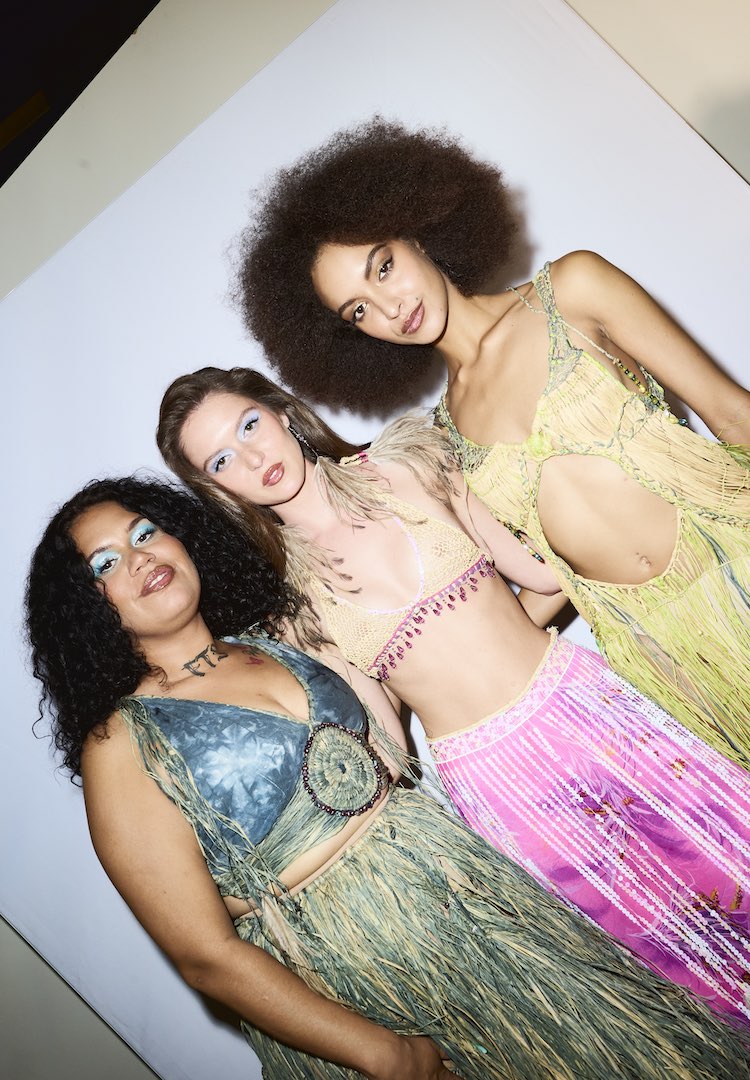Maara designer Julie Shaw’s latest collection speaks to the future of Indigenous design
PHOTOGRAPHY BY JESSE LEIGH ELFORD
WORDS BY JANICE NG
“It was a real privilege to be part of those shows and represent Indigenous talent.”
Maara Collective has been on a steady upwards trajectory since FJ last spoke to its designer and founder, Yuwaalaraay woman Julie Shaw. Following a handful of impressive awards in the last two years, Julie’s most recent Resort 2022 collection, Tjukula, is yet another notch on her very, very talented belt.
Tjukula, meaning waterholes, is a collaborative project between Maara Collective and Pitjantjatjara artist Lexie Michael. Every one of Julie’s collections is a homage to the rich Australian landscape, with Tjukula referencing the Anangu Pitjantjatjara Yankunytjatjara (APY) land Lexie Michael comes from.
Keep your finger on the pulse on the latest fashion trends over at our Fashion vertical.
Unveiled as part of the groundbreaking Indigenous Fashion Projects at this year’s Afterpay Australian Fashion Week, it’s impossible not to notice the movement of the silk and linen designs, even when looking at still images from the runway.
Models poised mid-stride in opalescent blue, ochre and delicate pinks and relaxed suiting, and the drapery was second to none. Paired with a print representative of Lexie Michael’s country, it was a treat to look at and even more so to learn how this collaboration came to be. I had a chat with Julie about Tjukula, what we can expect from Maara Collective and her hopes for the future of other Indigenous designers.
Hi Julie, can you talk us through your Resort ’22 collection Tjukula?
Tjukula is our collection that we launched at [Afterpay] Australian Fashion Week this year and [it] will be available to purchase in October, November and December. The collection features a collaborative print with Lexie Michael, a Pitjantjatjara artist. She works out of an Aboriginal art centre in the APY land called Ernabella Arts, and through [the] Copyright Agency I’m licensing her beautiful print, which is also called Tjukula.
What was the story and inspiration behind Tjukula?
‘Waterholes’ is a depiction of her [Michael’s] country, the APY Lands, and variations of the landscape where people would travel through Uluru to the APY lands and her homeland. I saw the print and thought that it was so beautiful and quite different to other prints that appear out of the area. It really spoke to my brand and my vision. The colours were so subtle, beautiful and feminine. It was a collaborative process of securing her print to be licensed, and we worked really closely via [the] Copyright Agency through all aspects of the design process.
With the print featuring as the highlight of the collection, I printed it digitally onto silk and linen fabrics. I also built the collection with inspiration from the colour palette of her prints. I pulled out that beautiful opal blue, the pink ochre, and we put the colours into my linen suiting, which is a bit of a new step forward for the brand, venturing into the relaxed resort suiting area. The print was such a huge focus and feature that has really inspired not only the silhouettes, but the colour palette and the fabrics that I’ve used.
View this post on Instagram
I can see how important it is for you to highlight Indigenous artists and designers. Can you explain how you go about sourcing these new talents?
With Lexie, that was a partnership formed through [the] Copyright Agency. My previous print collection was with a Yuwaalaraay artist Lucy Simpson. Through our family and community, we’ve known each other for a long time, so it was a natural coming together into a creative partnership.
I also wanted to add a little jewellery collection for last year’s resort and that was with Krystal Hurst of Gillawarra Arts. She’s a Worimi jewellery designer and artist, and I had met her at one of the Indigenous art fairs probably about two years prior and we just started chatting. When I was looking to incorporate jewellery into my collection, she was the first person I thought of because I find her style is refined and beautiful, but very culturally directed.
As for the weavers from Bula’bula Art Centre, that collection came through an introduction with the art manager. We had many conversations back and forth over email and phone, and I was invited to their community up in Arnhem Land in Ramingining. I travelled up there and stayed in community for a couple of weeks and worked out of their arts centre and developed the collection up there with them. Every partnership is a little bit different and comes around in different ways and forms.
Has anything changed for you since winning the Community Collaboration Award at the National Indigenous Fashion Awards in 2020?
Things have just kind of continued to ramp up in the business and with the brand. As part of that award, I’ve been involved in a mentoring program with Country Road which has been incredible. I was a finalist in the National Designer Award and a finalist in the Australian Fashion Laureate as well.
I’m still in the David Jones Indigenous Pathways Program which has been fantastic, and that’s how the opportunity to present a collection at [Afterpay] Australian Fashion Week through the Indigenous Fashion Projects runway [came about].
View this post on Instagram
How pivotal was the Indigenous Fashion Projects show at Afterpay Australian Fashion Week?
It was really significant – not only our show but the First Nations Design Show there as well. I feel like collectively, there was such an Indigenous presence at [Afterpay] Australian Fashion Week. There was also the beautiful Welcome to Country that happened at the beginning of the week.
It was a really significant week for us and all in all, there were 13 Indigenous designers presented over the two shows. It was a real privilege to be part of those shows and represent Indigenous talent. Hopefully, we impressed industry, media, press shows and consumers.
What are your hopes for the future of Maara Collective and Indigenous designers?
For my brand, I just want to continue on, continue building collections, elevating each collection and each new season, and I don’t know where I go to after shooting Charlee Fraser, but [laughs]. [I want to] keep the momentum going, continue to build solid business foundations as well, because you’ve got to have those.
You have got to have everything set up and ready to go for the next steps whether that be securing a partnership with a department store or picking up stockists. Eventually, to show a solo show at [Afterpay] Australian Fashion Week would be incredible. I hope for all those things for all the Indigenous designers as well, that they can [do these things too].
Shop Maara Collective here.

